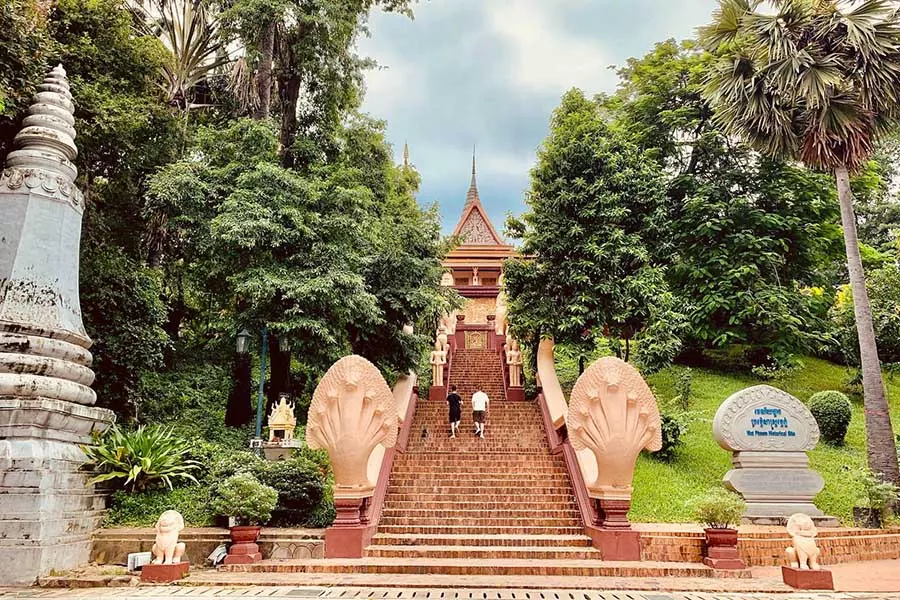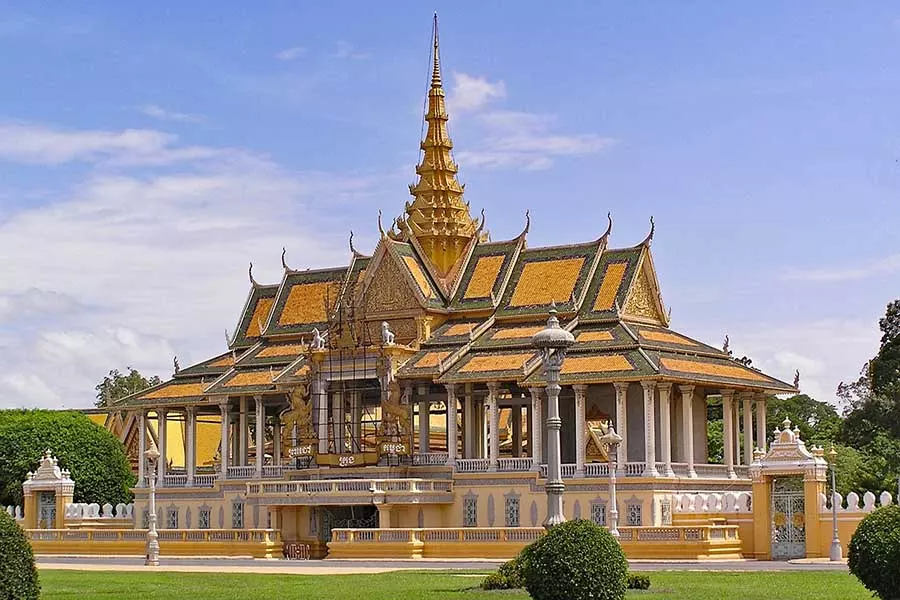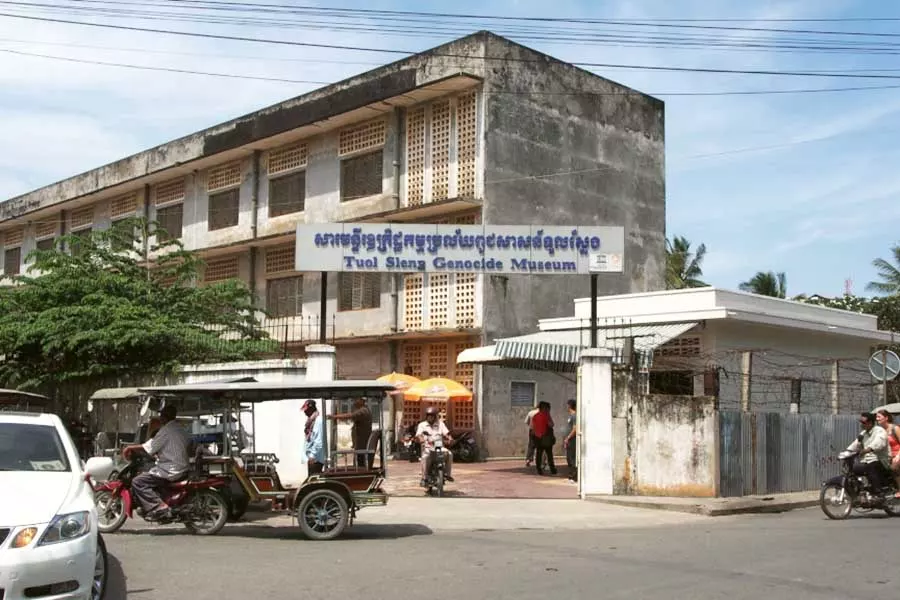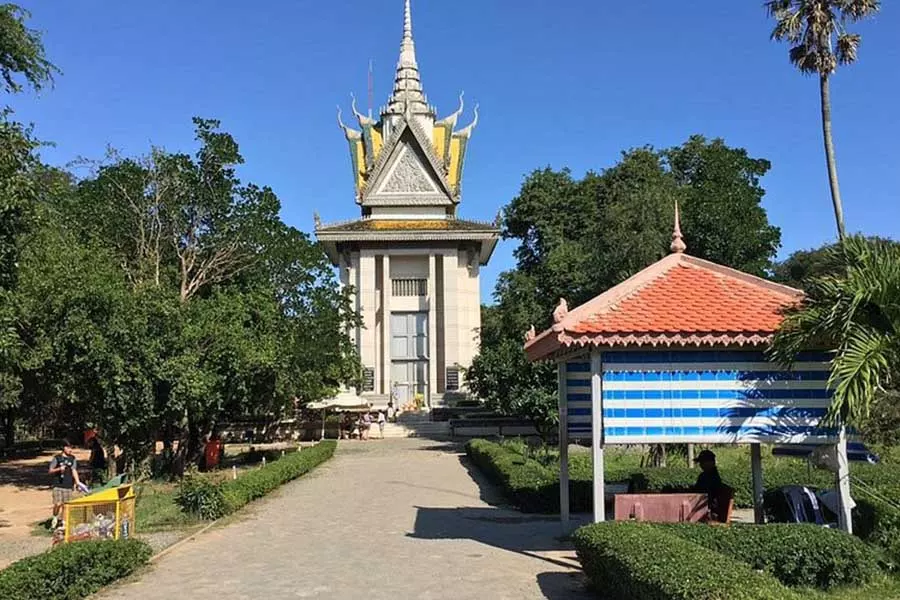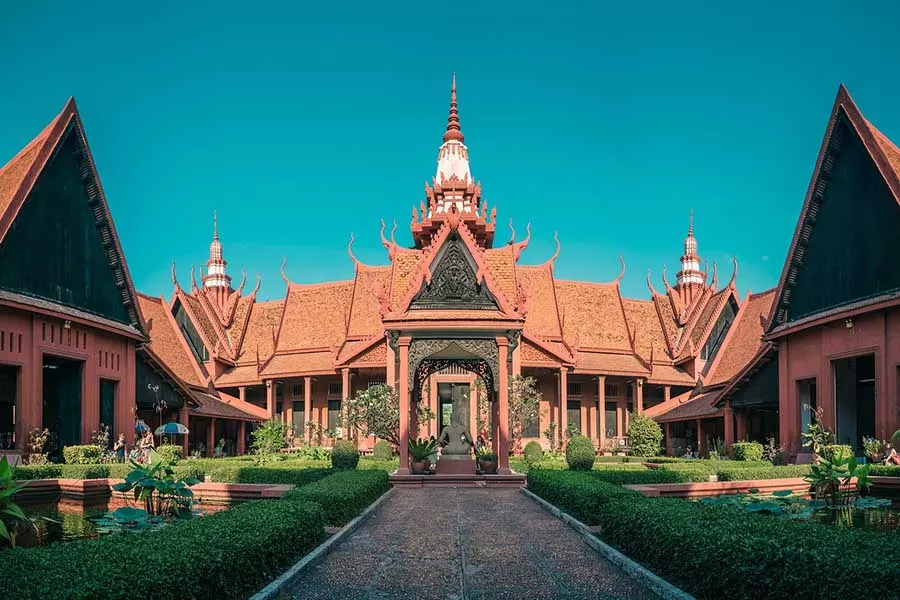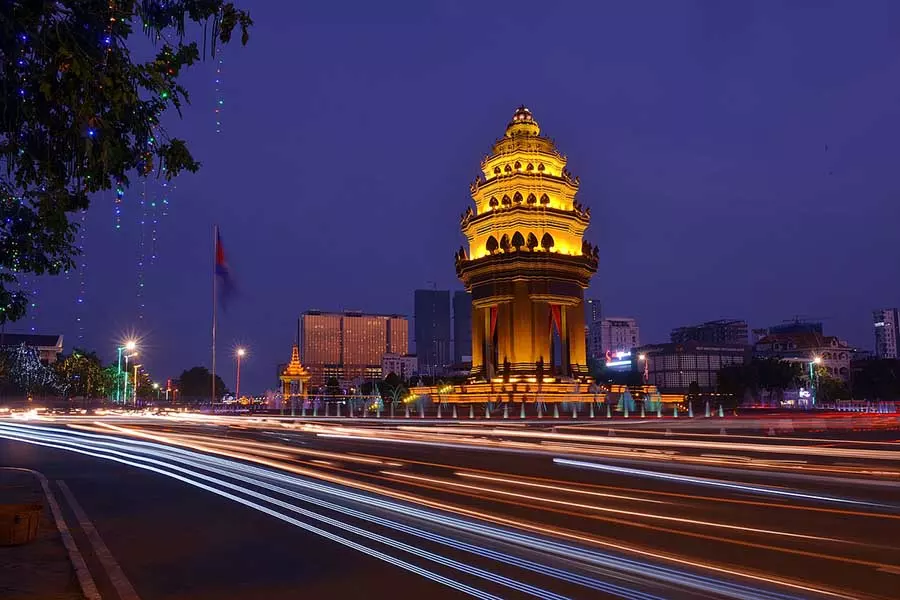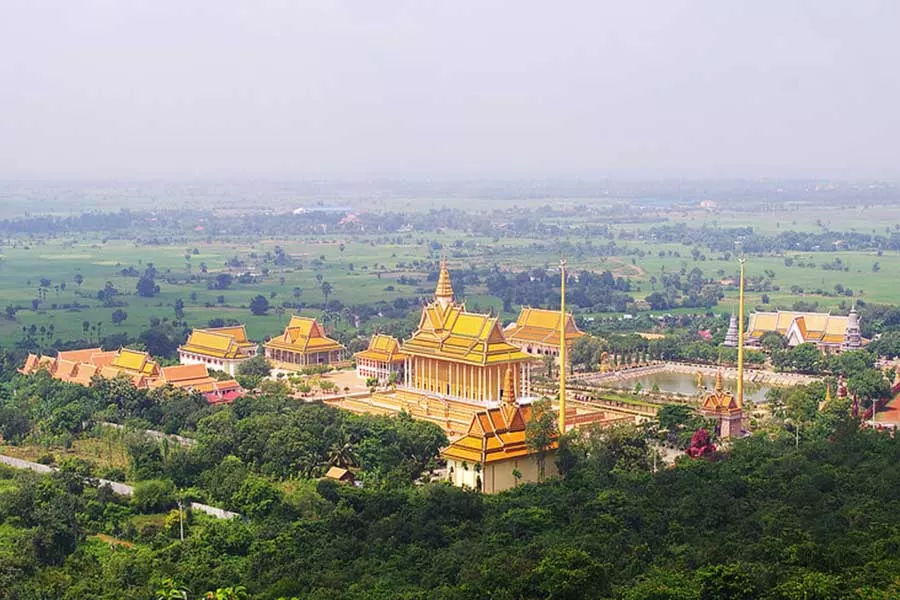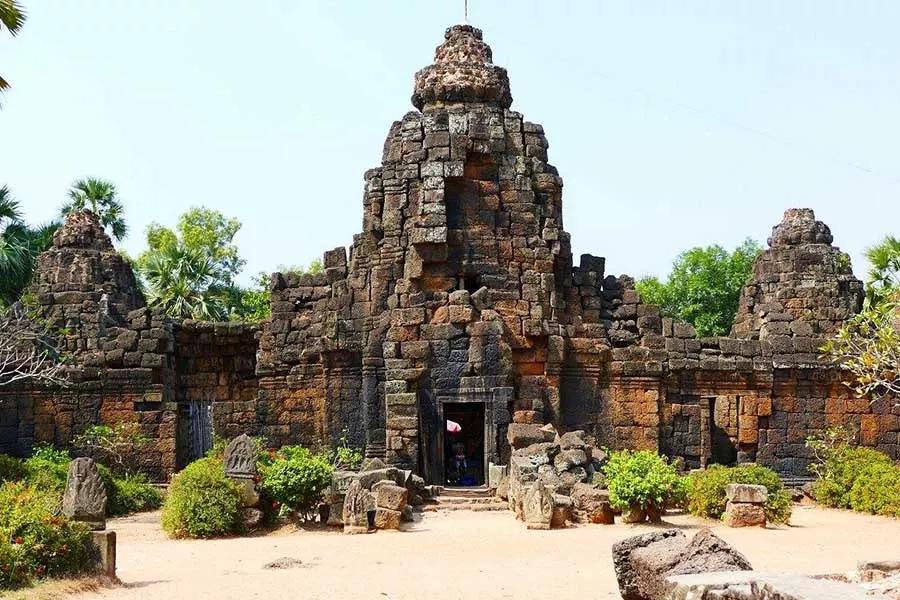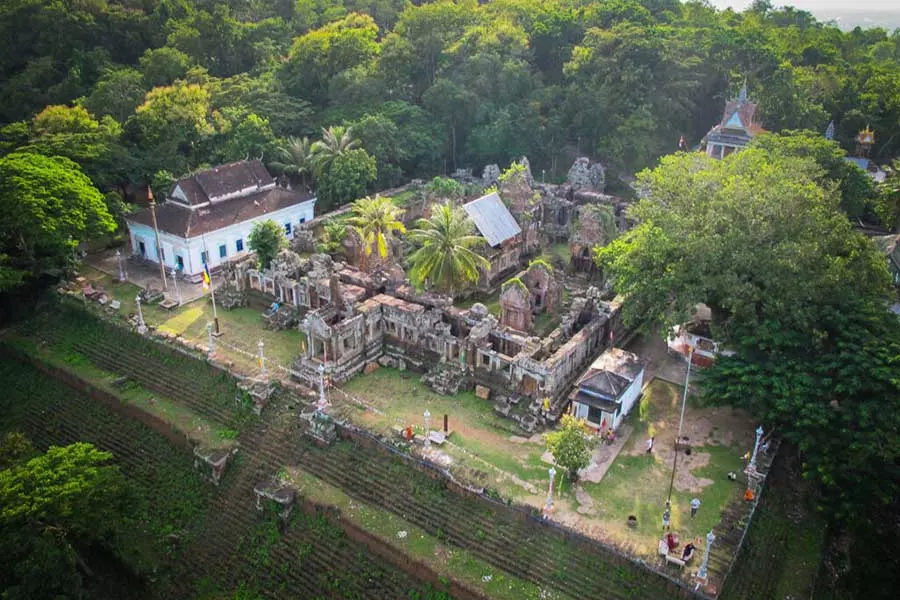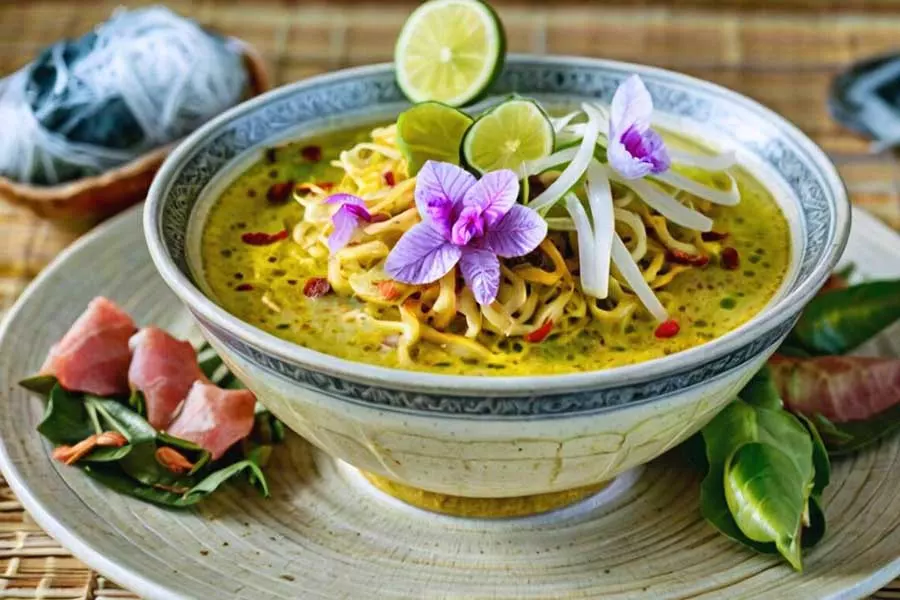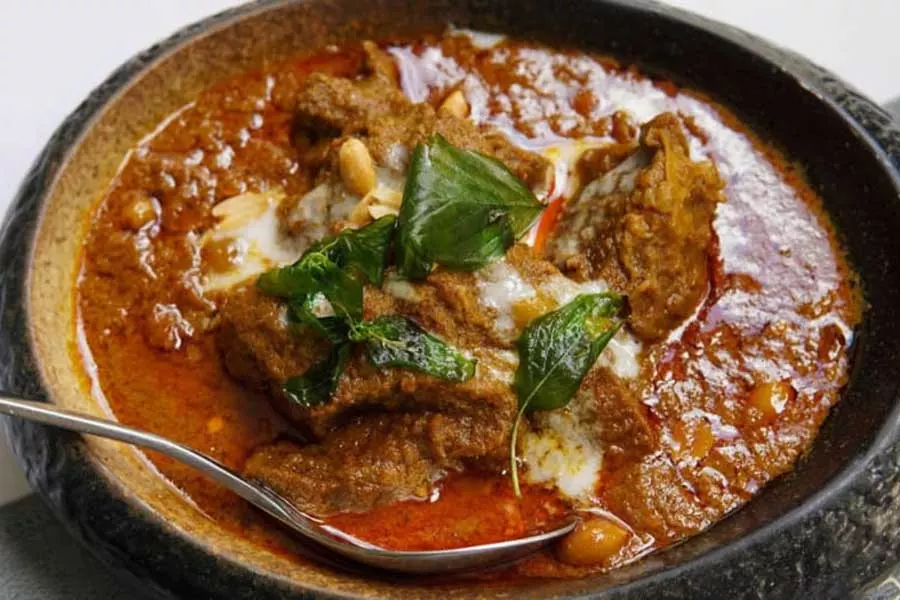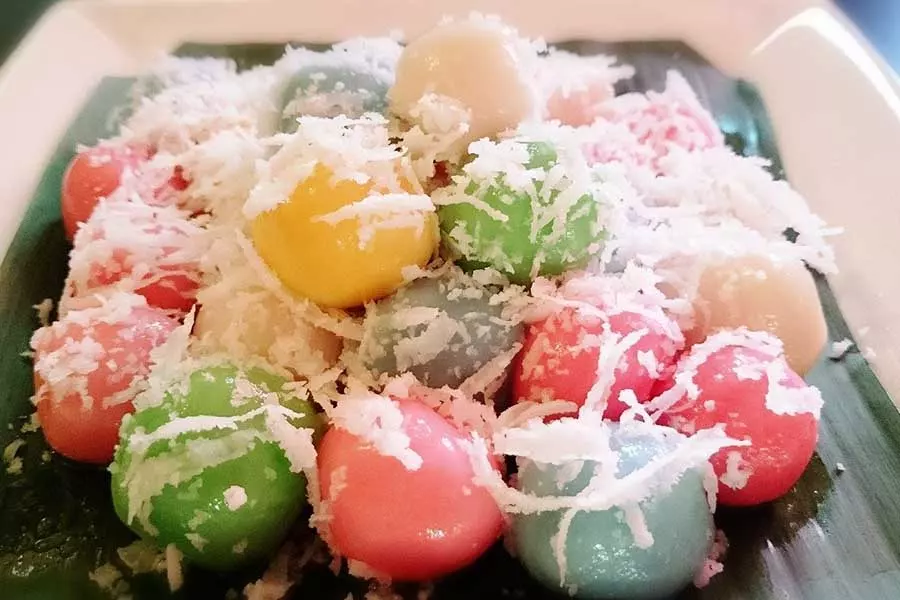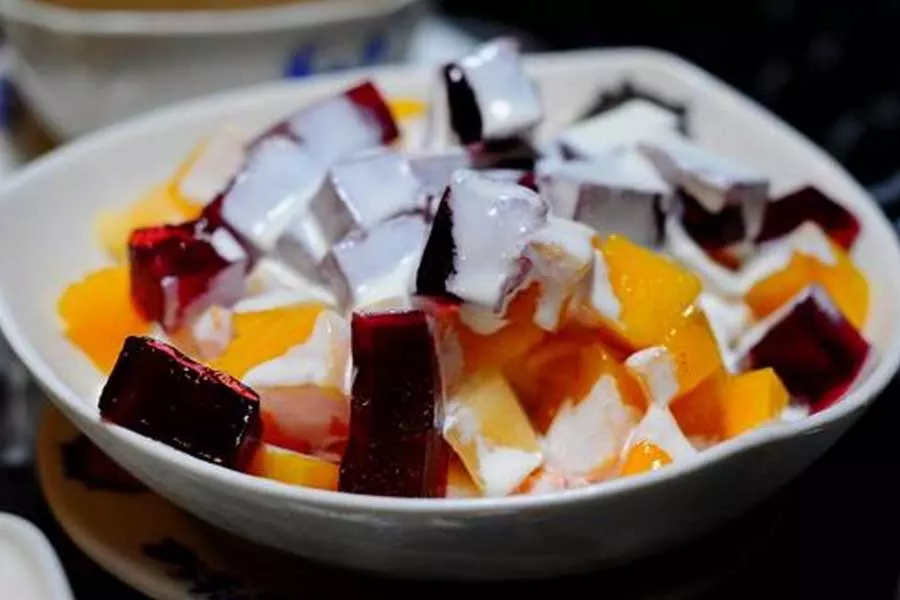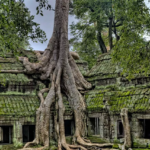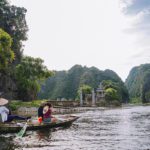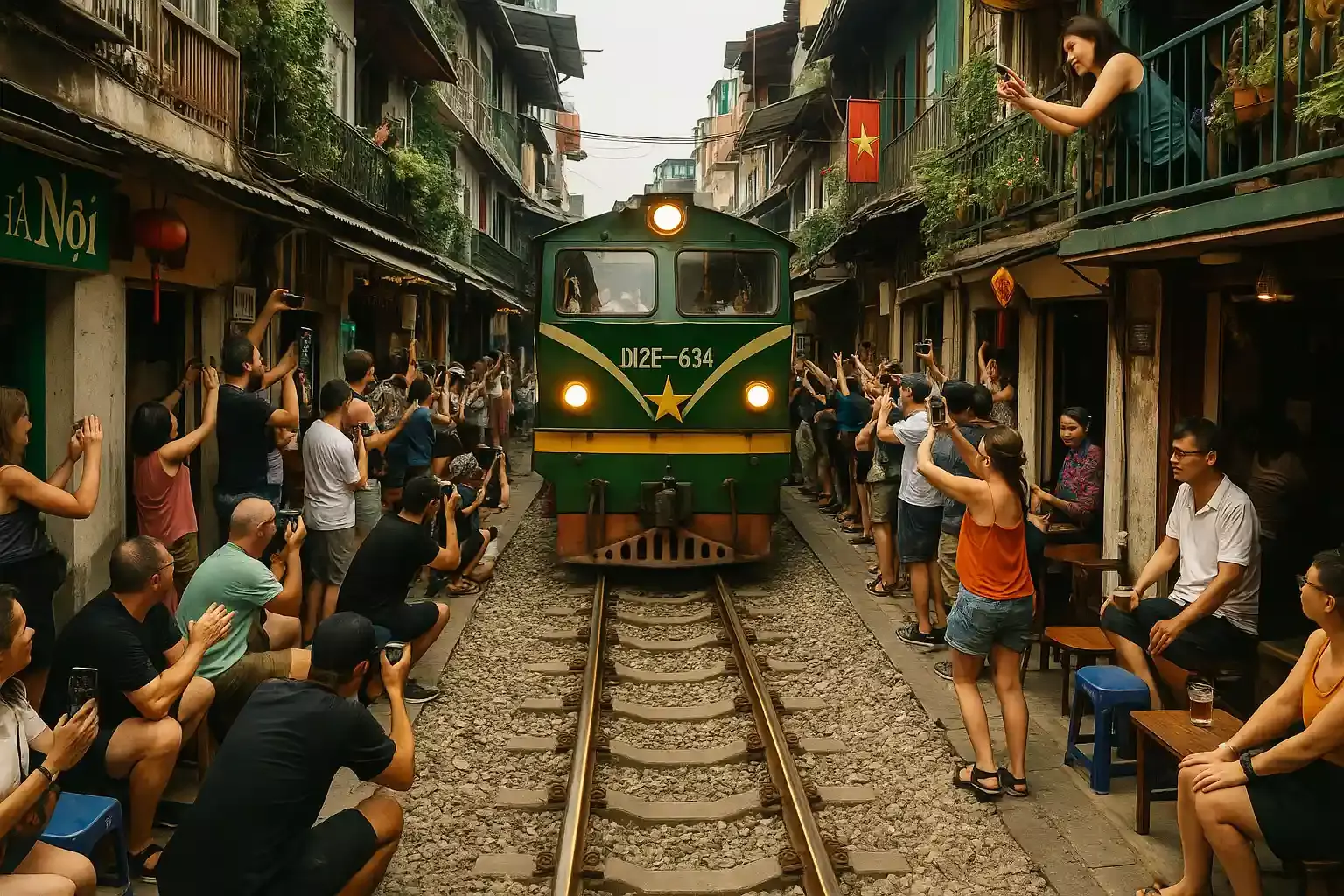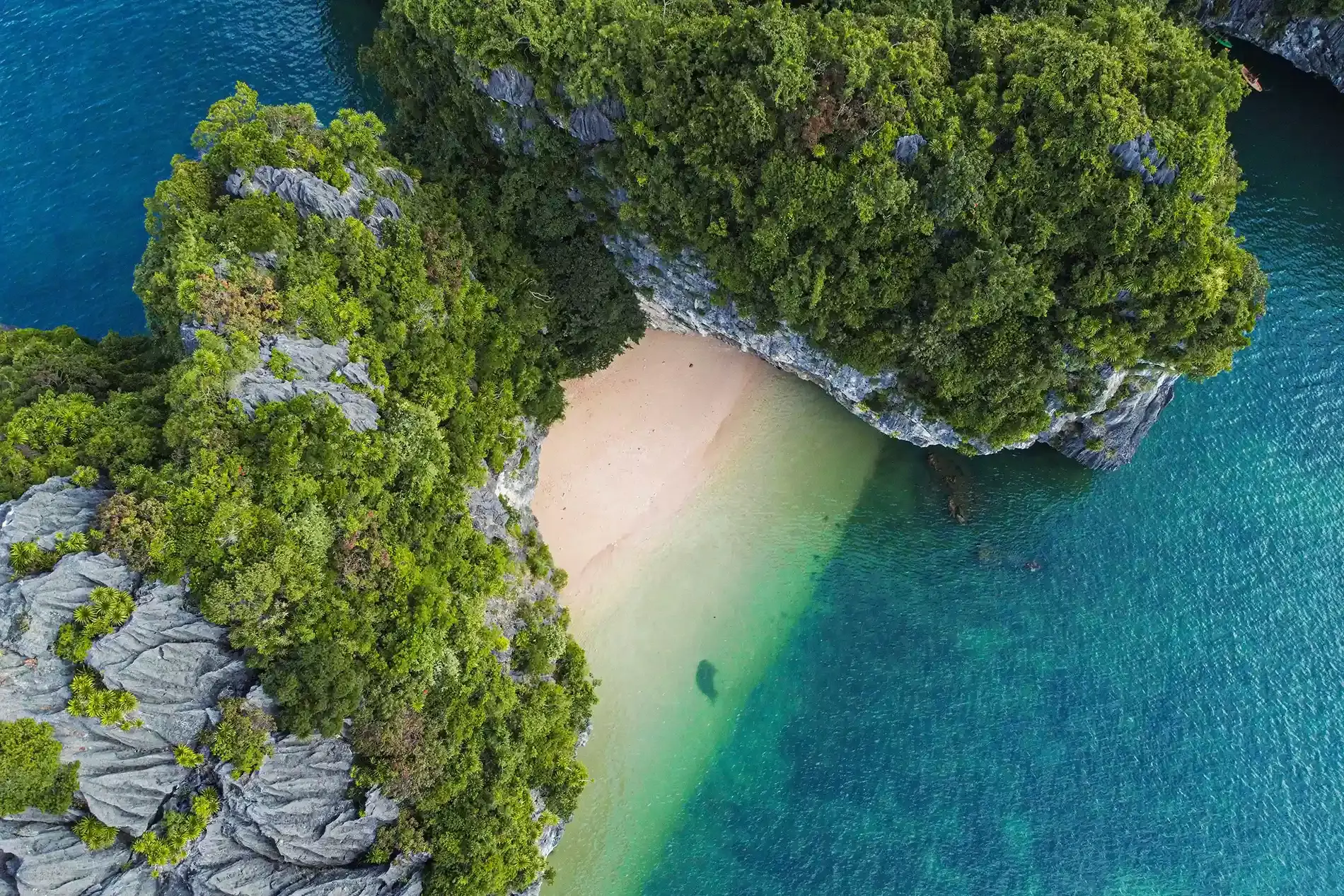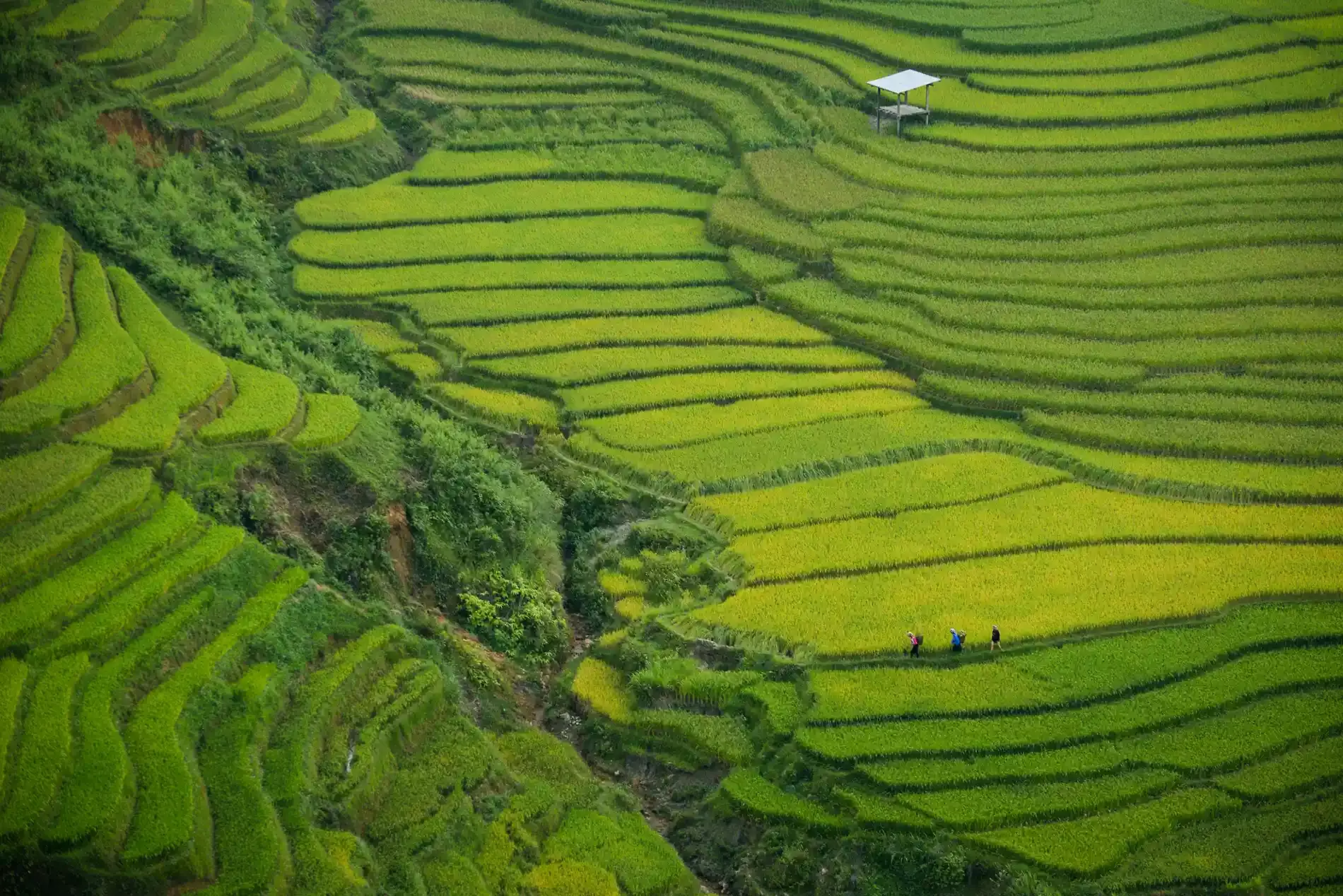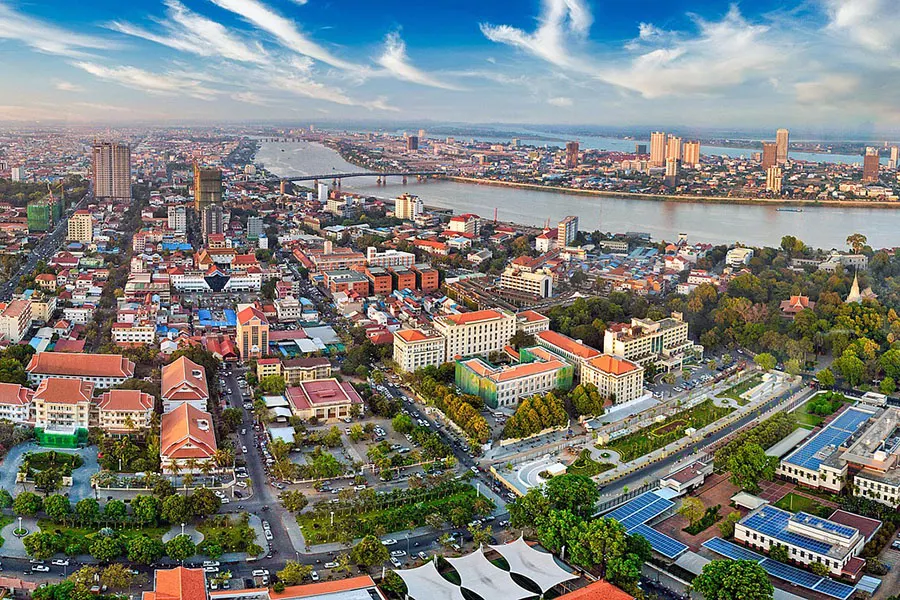
Phnom Penh: all you need to know about Cambodia’s capital
Cambodia, a close neighbor of Vietnam, attracts millions of tourists each year, enchanted by its rich landscapes and vibrant culture. Among its top destinations, Phnom Penh shines especially brightly. Known as the “Paris of the Orient,” this captivating capital skillfully blends colonial charm with local traditions, drawing travelers from across the region.
Here, Parfum d’Automne invites you to explore this fascinating city and shares essential tips to make the most of your journey.
Table des matières de l'article
About Phnom Penh
Phnom Penh, the capital and largest city of the Kingdom of Cambodia, is a remarkable destination known for its unique blend of tradition and modernity. Visitors are captivated by its bewitching atmosphere, where the old harmonizes seamlessly with the new.
The city is famed for its mysterious and ancient sites, reflecting the soul of the “Land of Pagodas.” Architectural landmarks, influenced by both French and Khmer styles, showcase the local culture while attracting countless international tourists eager to explore and admire these historical gems.
If you enjoy immersing yourself in culture, Phnom Penh is a captivating destination with must-see sites. Take time to visit the sacred Wat Phnom, the stunning Royal Palace, and the National Museum of Cambodia, which preserves priceless traditions.
Notable sites like the Tuol Sleng Genocide Museum (S-21) and the Killing Fields Memorial at Choeung Ek reveal the country’s tragic past. Don’t miss the lively Central Market and the majestic Independence Monument – these are just some of the places that make Phnom Penh a capital with unforgettable charm and a profound cultural identity.
Phnom Penh from above, Cambodia
Must-see attractions in Phnom Penh
Wat Phnom temple
Founded in 1373, Wat Phnom is one of Phnom Penh’s most iconic and impressive religious landmarks. Standing at 27 meters above the city, it is not only the highest point in the Cambodian capital but also its largest temple.
The site draws visitors with its rich history and deep spiritual significance. You can ascend a winding path and descend by another, creating an exciting experience of discovery.
Along the way, admire the majestic statue of the sacred serpent, Naga, a mythical creature symbolizing protection, along with two guardian lions, iconic figures frequently seen in Cambodian temples, particularly those at Angkor. These imposing sculptures add a mystical and symbolic dimension to the climb to the temple’s summit.
Descending, you’ll find a small plaza with a statue of King Ponhea Yat, a respected historical ruler of Cambodia. Nearby, visitors are intrigued by a unique grassy clock, a gift from the Chinese community to the temple.
This curious timepiece, with its verdant hands, remains operational to this day and represents the fascinating blend of tradition and innovation, making Wat Phnom both a spiritual and historical site.
Note : When visiting, avoid wearing short sleeves, and when offering prayers to Madame Penh, it is forbidden to wish for love. There are many free-roaming monkeys around the temple; keep a respectful distance and do not disturb them.
Entrance of Wat Phnom temple in Phnom Penh
Royal Palace
The Royal Palace of Cambodia, located in the heart of Phnom Penh, is one of the country’s most impressive architectural gems, fusing royal elegance with the splendor of Khmer culture. More than just the King’s residence and a place to host foreign dignitaries, it is the center of royal ceremonies, festivals, and major diplomatic events. As a symbol of Cambodian history and culture, it captivates visitors with its majestic architecture and unique atmosphere.
Its architecture subtly blends French elegance with traditional Asian elements, creating a space that is both modern and deeply rooted in local culture. With its soaring towers and gracefully curved roofs, complemented by intricate decorative details, the palace offers a breathtaking and harmonious view. Made primarily from golden stone and brick, it exudes radiant splendor while preserving the traditional charm of Cambodia.
Inside, the palace reveals a wealth of architectural and artistic detail that leaves visitors in awe. You’ll find delicate sculptures, vivid bas-reliefs, and vibrant murals that reflect the country’s exceptional artistic heritage. Every corner of the palace tells a story, illustrating the history, spirituality, and grandeur of the Khmer kingdom.
Highlights include the Golden Temple and Silver Temple, sacred sites housing valuable Buddha statues and offering a unique glimpse into Cambodian spirituality. The Chanchhaya Theater, where royal ceremonies take place, and the Reception Hall, a witness to numerous historic events, are also must-see spots.
The Royal Palace is more than a symbol of power; it is a cultural and artistic treasure that fascinates, inspires, and enchants all who walk through its doors, making every visit an unforgettable experience.
Royal Palace, Phnom Penh
Tuol Sleng Genocide Museum (S-21)
**The Toul Sleng Genocide Museum, formerly known as S21 prison, is one of the most poignant witnesses to Cambodia’s tragic history. Its name, “Toul Sleng,” meaning “Hill of Poison” in Khmer, evokes the terror haunting the collective memory of the Cambodian people.**
What was once an ordinary school was transformed by the Khmer Rouge regime into a site of unimaginable torture, where thousands of innocent lives were crushed under the brutality and inhumanity of the regime.
In 1975, following the Khmer Rouge’s rise to power, Toul Sleng was converted into a high-security prison, called S21, where between 17,000 and 20,000 people, mostly regime members accused of treason, were imprisoned.
Classrooms were turned into dark cells, corridors into torture rooms, and barbed wire was erected, creating a true hell on Earth. Very few prisoners survived this ordeal, and those who did were witnesses to unimaginable suffering.
Today, Toul Sleng has become a genocide museum, housing photographs, documents, and heart-wrenching accounts of the atrocities committed by the Khmer Rouge. The faces of the victims, objects left behind, and remnants of those dark times immerse visitors in deep emotion and encourage reflection on the suffering inflicted upon so many human lives.
The museum is located in the Toul Svay Prey neighborhood, south of Phnom Penh, and still retains its dilapidated walls, barbed wire, and oppressive atmosphere, recalling the cruel past of this place.
Toul Sleng is not just a site of memory but a sanctuary for lost souls, a poignant tribute to those who suffered, and a solemn warning so that future generations may never experience such barbarism.
Entrance of Tuol Sleng Genocide Museum (S-21)
Choeung Ek killing fields memorial
The Choeung Ek site, tragically known as the “Killing Field,” is one of Cambodia’s most harrowing memorials. It is one of many locations across the country where the Khmer Rouge regime systematically exterminated innocent men, women, and children. Today, Choeung Ek stands as a somber reminder of this dark chapter, preserving the memory of over 17,000 victims who were brought here from Tuol Sleng prison (S-21) in Phnom Penh.
Although the site has been arranged for visitors, many remnants from the atrocities remain. Mass graves, fragments of clothing, and even bones occasionally surface, particularly after heavy rain, serving as powerful reminders of the horrors that took place. A memorial stupa, filled with over 8,000 human skulls, has been erected at Choeung Ek. This structure offers visitors a glimpse into the scale of the tragedy and an opportunity to pay respects to the deceased.
Located just 15 kilometers south of Phnom Penh, Choeung Ek is accessible by tuk-tuk and is a popular destination for those looking to understand Cambodia’s recent history. Admission is $6, which includes an audio guide providing detailed accounts of the events and experiences of survivors. The memorial serves as a powerful tribute to the victims of both the Cambodian civil war (1969-1975) and the Khmer Rouge genocide (1975-1979).
Due to the graphic nature of the exhibits and the distressing history, it is not recommended for children and individuals sensitive to violence or trauma.
Choeung Ek killing fields memorial
National Museum of Cambodia
The National Museum of Cambodia is a cultural treasure and an essential stop for anyone wishing to explore the richness of Khmer history and art. It houses one of the world’s most prestigious collections of Khmer sculptures, offering a fascinating window into the country’s artistic heritage. Upon entering, visitors are transported through time, with thousands of artifacts—refined sculptures, exceptional pottery, and ethnographic objects—showcasing over 1,000 years of history, covering the prehistoric era, pre-Angkor period, the Angkor era, and post-Angkor period.
The building itself is a work of art, designed in traditional Khmer architectural style. Its tiled roof is adorned with distinct Khmer motifs and mythical sculptures, such as the famous nine-headed sacred serpent Naga. The use of red terracotta throughout the complex, in contrast with dark wood interiors, creates a solemn yet warm atmosphere.
The museum includes eight main galleries, each providing an in-depth look into a particular facet of Khmer history: a gallery dedicated to bronze sculptures, one to prehistory, spaces for the pre-Angkor and Angkor eras, and rotating exhibitions that enrich the experience. Visitors can also explore conservation workshops and a ceramics gallery, offering insights into the artisanal techniques that shaped Cambodian art over the centuries. This journey into the soul of Cambodia inspires wonder and education at every step.
Note : Open daily from 8 am to 5 pm, with ticket sales ending at 4:30 pm. Admission is $10 for adults and $5 for youth aged 10-17. Plan your visit for around an hour to fully appreciate the museum’s exceptional collections, and consider visiting the nearby Royal Palace for an enhanced cultural experience.
National Museum of Cambodia
Independence Monument
The Independence Monument, a proud emblem of Phnom Penh, commemorates a pivotal moment in Cambodia’s history: the country’s reclaiming of independence after colonial rule. Inaugurated in 1962, this majestic structure stands at the intersection of Sihanouk and Norodom streets in the heart of the capital and was designed by Cambodian architect Vann Molyvann. Its unique architecture masterfully combines ancient Khmer elements with the stylized shape of a blooming lotus flower, a symbol of rebirth and purity.
More than just a monument, it serves as a peaceful refuge during the day, providing visitors with a shaded and refreshing space to escape the city’s intense heat. While access to the monument’s interior is not permitted, its serene surroundings invite reflection and relaxation. The monument, in striking crimson red, is accompanied by a modern fountain that lights up each evening, creating a captivating night display.
Beyond being a memorial site, the Independence Monument is central to major national celebrations, such as Independence Day and Constitution Day, embodying a vibrant place that reflects Cambodia’s history and identity.
Independence Monument at night
Phnom Penh central market
The Central Market, also known as Phsar Thmei, is one of Phnom Penh’s iconic landmarks and a must-visit spot for travelers to Cambodia’s capital. Built in the 1930s during the French colonial period, this market stands out for its unique Art Deco architecture, with an enormous yellow dome that dominates the skyline. The building, designed by French architects Jean Desbois and Louis Chauchon, is an engineering marvel, created to be airy and bright, perfectly suited to the tropical climate.
The Central Market is more than just a market; it’s a vibrant hub of commerce and culture where old meets new. The aisles are filled with stalls offering an impressive variety of goods: gold and silver jewelry, gemstones, clothing, electronics, Cambodian handicrafts, and even local culinary specialties. This market is a true shopping paradise and a showcase of Cambodian traditions.
The market’s atmosphere is a unique sensory experience. The air is filled with the scents of spices, flowers, and tropical fruits, while the vivid colors of fabrics and handicrafts captivate the eyes. The market is organized into four main wings, each featuring a specific array of products, making it easy for visitors to navigate this bustling space.
In the evening, the area around the market lights up, creating a warm and welcoming atmosphere. Locals from Phnom Penh gather here to dine or simply stroll around, adding to the lively and authentic character of the place.
In essence, the Central Market is far more than a shopping center; it’s a meeting place for locals and tourists, a reflection of Cambodia’s cultural diversity and hospitality, and a symbol of Phnom Penh’s rich history. Whether you come for shopping, to taste local flavors, or simply to admire the architecture, a visit to the Central Market is a journey into the heart of Phnom Penh’s soul.
Phnom Penh central Market
Places to visit around Phnom Penh
Udong: A historic capital of Cambodia
Located around 35 kilometers north of Phnom Penh, Oudong (also spelled Oudong or Oudongk) was once the capital of Cambodia, serving as the country’s political and spiritual center at various times from 1618 to 1866. Perched on low hills overlooking the surrounding plains, Udong offers visitors a glimpse into Cambodia’s past, though much of its former splendor has faded with time. Despite this, the site remains a deeply significant and evocative destination, well worth a visit for those interested in Cambodia’s rich heritage.
The main hill, known as Phnom Reach Throap or the “Hill of the Royal Treasury,” is the site of several impressive stupas, including those dedicated to Cambodia’s revered kings. Among these is the tomb of King Monivong, who reigned from 1927 to 1941, and King Soriyopor, who ruled prior to 1618. Each stupa is uniquely designed, embodying elements of Buddhist and Khmer architectural styles. The hill also once held an enormous Buddha statue, a symbol of peace and spirituality, which was tragically destroyed by the Khmer Rouge during their oppressive regime.
The smaller ridge nearby holds additional stupas, including Ta San Mosque, which serves the local Muslim community and reflects Cambodia’s cultural diversity. This ridge also has remnants of a former Khmer Rouge prison, a haunting reminder of the turmoil and suffering that the region endured during the country’s darkest years. Visitors can explore these sacred sites and appreciate the peaceful ambiance while taking in the panoramic views of the Cambodian countryside.
As you wander through Udong’s hills, you’ll encounter not only relics of royalty but also stories of survival and resilience, preserved in the weathered stones and serene stupas. The journey through Udong offers a reflective experience that connects the Cambodia of today with the grandeur and struggles of its past.
Aerial view of Oudong near Phnom Penh
Ta Prohm at Tonlé Bati: A gem of ancient Cambodia
Located approximately 32 kilometers south of Phnom Penh, Ta Prohm at Tonlé Bati is a beautifully preserved laterite temple that showcases Cambodia’s rich architectural and spiritual heritage. Built by the legendary King Jayavarman VII in the 12th century on the foundations of a 6th-century Khmer shrine, Ta Prohm is a smaller, lesser-known gem that captivates visitors with its intricate carvings and tranquil surroundings.
The temple is constructed from laterite stone, with five main chambers, each containing a statue or a Shiva lingam, reflecting the temple’s original Hindu influences before it became a Buddhist site. The inner sanctums are adorned with ornate carvings that depict mythological scenes and celestial dancers, or apsaras, typical of Khmer architecture during Jayavarman VII’s reign. These delicate details give the structure a timeless beauty, and the temple’s intimate scale allows visitors to appreciate the craftsmanship up close.
Ta Prohm is not just a historical monument but a living shrine, still frequented by fortune-tellers who offer to read palms and predict futures for a few thousand riel. The temple is often filled with the sounds of a traditional Khmer orchestra playing outside the main sanctuary, adding to the vibrant and spiritual atmosphere. The mix of incense, music, and the gentle presence of worshippers creates a unique ambiance that makes this place feel alive with both history and contemporary Cambodian culture.
Just a short walk from Ta Prohm, visitors can relax at a peaceful lakeside picnic area, which is generally quiet and free from large crowds. Here, you can enjoy the scenic view of Tonlé Bati lake, making it an ideal spot for a break after exploring the temple. Whether you’re drawn to its architectural beauty or the serene surroundings, Ta Prohm at Tonlé Bati offers a memorable experience of Cambodia’s ancient spirituality and ongoing cultural traditions.
Ta Prohm at Tonlé Bati
Phnom Chisor: a sacred mountain and temple with breathtaking views
After visiting Tonlé Bati, continue your journey south to Phnom Chisor, an ancient hilltop temple that rewards travelers with both cultural enrichment and stunning natural beauty. Rising about 100 meters above the plains, Phnom Chisor is accessible by climbing a staircase of roughly 750 steps. Though the ascent can be challenging, particularly in the heat of the day, the spectacular views and sense of tranquility at the top make the effort worthwhile. Vendors along the way offer refreshing drinks and snacks, allowing visitors to take breaks and enjoy the scenery during the climb.
At the summit, the 11th-century temple, known as Suryagiri, or “Mountain of the Sun,” stands as a testament to the architectural achievements of the Khmer Empire. Built during the reign of King Suryavarman I, the temple was originally dedicated to Shiva, reflecting Cambodia’s early Hindu influence. Constructed from laterite, brick, and sandstone, Suryagiri features intricately carved lintels and doorways that depict Hindu deities and mythical creatures, each symbolizing aspects of protection, power, and spirituality.
What truly sets Phnom Chisor apart is its remote setting, which creates an almost mystical atmosphere. The temple’s ancient architects designed a long, straight road that stretches out from the base of the hill, connecting the temple to surrounding villages and the royal city. This road, still visible today, reinforces the site’s sacred significance and offers a fascinating glimpse into the Khmer Empire’s vision of sacred geography. As you gaze eastward from the temple, this ancient roadway is clearly visible, flanked by rice fields and dotted with smaller temples and shrines along its length.
From the top of Phnom Chisor, the panoramic views over the Cambodian countryside are breathtaking. Lush green fields, rolling hills, and scattered villages spread out in all directions, giving visitors a sense of the serene beauty of rural Cambodia. In the distance, a large natural lake shimmers under the sunlight, adding to the area’s allure.
Phnom Chisor’s isolation and elevated position, combined with its ancient, crumbling structures, lend it a mystical charm similar to landmarks like Southeast Asia’s Stonehenge or Machu Picchu. This hidden gem invites introspection and a connection to Cambodia’s distant past, making it a must-visit site for travelers who wish to experience the country’s spiritual and historical depths beyond the more popular tourist destinations.
Phnom Chisor, Cambodia
Best time to visit Phnom Penh
Phnom Penh has a monsoonal tropical climate, with two distinct seasons: the dry season and the rainy season. The dry season lasts from December to May, split into two phases: the cool phase from December to February, and the hot phase from March to May.
This dry and pleasant climate is ideal for tourism activities, particularly during the cool season when you can comfortably explore the city away from the intense heat.
The rainy season, from June to November, sees about 80% of annual rainfall. The months of July and August often bring floods, complicating travel and sightseeing. Thus, the rainy season is not the most favorable time to visit Phnom Penh or other regions of Cambodia.
However, beyond the weather, you might also plan your visit during Khmer traditional festivals for a truly immersive cultural experience. Notable celebrations include:
# Chol Chnam Thmay, the Khmer New Year, from April 13-15.
# Bom Chaul Chnam, also celebrated from April 13-15.
# The Boat Racing Festival, held annually from November 24-26.
What to eat in Phnom Penh? Local culinary delights
Nom Banh Chok: Cambodia’s beloved breakfast noodles
Nom Banh Chok, or “Khmer noodles,” is a classic Cambodian breakfast dish that locals love for its light yet flavorful profile. This dish features rice noodles topped with a fragrant, fish-based broth made from local fish, prahok (fermented fish paste), lemongrass, turmeric, and kaffir lime, creating a uniquely aromatic experience.
The noodles are garnished with fresh vegetables and herbs—such as bean sprouts, shredded banana flower, cucumber, and basil—adding a crisp contrast to the warm broth. Often sold by street vendors in the early morning, Nom Banh Chok offers a taste of traditional Cambodian cuisine that’s both refreshing and deeply rooted in the country’s heritage. Trying it is a must for an authentic Cambodian experience.
Nom Banh Chok, the cambodian dish
Khmer Red Curry: the fragrant Samlor Kari
Khmer Red Curry, known locally as Samlor Kari, is a classic Cambodian dish cherished for its rich, aromatic flavors and striking red hue. Unlike some other Southeast Asian curries, Samlor Kari is typically mild, allowing its complex blend of spices to shine through without overwhelming heat. The curry’s base is a fragrant mix of red chili, garlic, onion, and both fresh and dried chili peppers, combined with other essential ingredients like lemongrass, turmeric, and galangal, creating a deep, warm flavor profile.
Simmered with coconut milk, this curry has a luscious, creamy texture that balances its subtle spice and enhances the earthy undertones of the traditional ingredients. Samlor Kari is often cooked with tender pieces of chicken, fish, or beef, as well as a selection of vegetables like sweet potatoes, eggplant, and green beans, which absorb the flavors of the curry and add layers of texture. The vibrant red color, achieved through the combination of chili and turmeric, gives the dish its iconic look, making it a feast for both the eyes and the palate.
Typically served with crusty bread, a legacy of French influence in Cambodia, or with steamed rice, Khmer Red Curry is a versatile dish enjoyed at family gatherings and festive occasions. Its delicate balance of coconut creaminess, fragrant spices, and tender ingredients makes Samlor Kari a beloved staple of Khmer cuisine and a must-try dish for those seeking an authentic taste of Cambodia.
Samlor Kari or Khmer Curry
Num Plae Ai: Cambodia’s sweet rice cake
Num Plae Ai is a traditional Cambodian dessert loved for its simplicity and delightful sweetness. Similar to Vietnam’s bánh trôi, these small, colorful rice cakes are made from glutinous rice flour and shaped into bite-sized balls, each hiding a center of rich, melted palm sugar. When boiled, the rice cakes become soft and chewy, releasing the sweet filling in every bite.
After cooking, the rice balls are coated in a light, caramel-like syrup, which gives them a beautiful gloss and adds a layer of flavor. The final touch is a generous sprinkling of freshly grated coconut, adding a creamy sweetness and a slight crunch that balances the sticky texture of the rice cake. Num Plae Ai is often enjoyed during Khmer festivals and celebrations, offering a taste of nostalgia and a connection to Cambodian heritage. Each bite captures the essence of tropical Cambodia with the rich flavors of palm sugar and coconut, making it a must-try treat for anyone exploring Khmer cuisine.
Num Plae Ai dessert
Cha Houy Teuk: A colorful cambodian dessert
Cha Houy Teuk is a beloved Cambodian dessert that combines the richness of coconut milk with a variety of unique, tropical ingredients, creating a delightful treat enjoyed by people of all ages. This dessert often starts with a base of tender sticky rice or millet, which adds a satisfying, chewy texture. Mixed into this base are delicious elements like soft cubes of taro, hearty red beans, sweet pumpkin, and fragrant jackfruit, all of which contribute to a dynamic and layered taste experience.
One of the most distinctive features of Cha Houy Teuk is its colorful, jewel-like jellies, which are often made from natural algae or agar. These vibrant jellies not only make the dessert visually captivating but also provide a refreshing and subtly sweet contrast to the creaminess of the coconut milk. The jellies are soft and slightly bouncy, adding a playful texture that complements the other ingredients beautifully.
The coconut milk, sweetened lightly, ties all the elements together, creating a harmonious blend of creamy, fruity, and earthy flavors. Cha Houy Teuk is typically served in small bowls or cups, making it a popular choice as a refreshing dessert during Cambodia’s warmer months. With its mix of flavors, textures, and eye-catching colors, this dessert offers a taste of traditional Khmer sweetness that is both satisfying and nourishing, perfect for those looking to experience the vibrant flavors of Cambodian cuisine.
Cha Houy Teuk, dessert
We hope this guide helps you make the most of your visit to this captivating city. For any questions or further assistance, feel free to contact Parfum d’Automne.
Sorry, the comment form is closed at this time.

